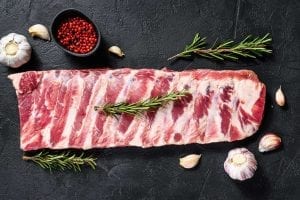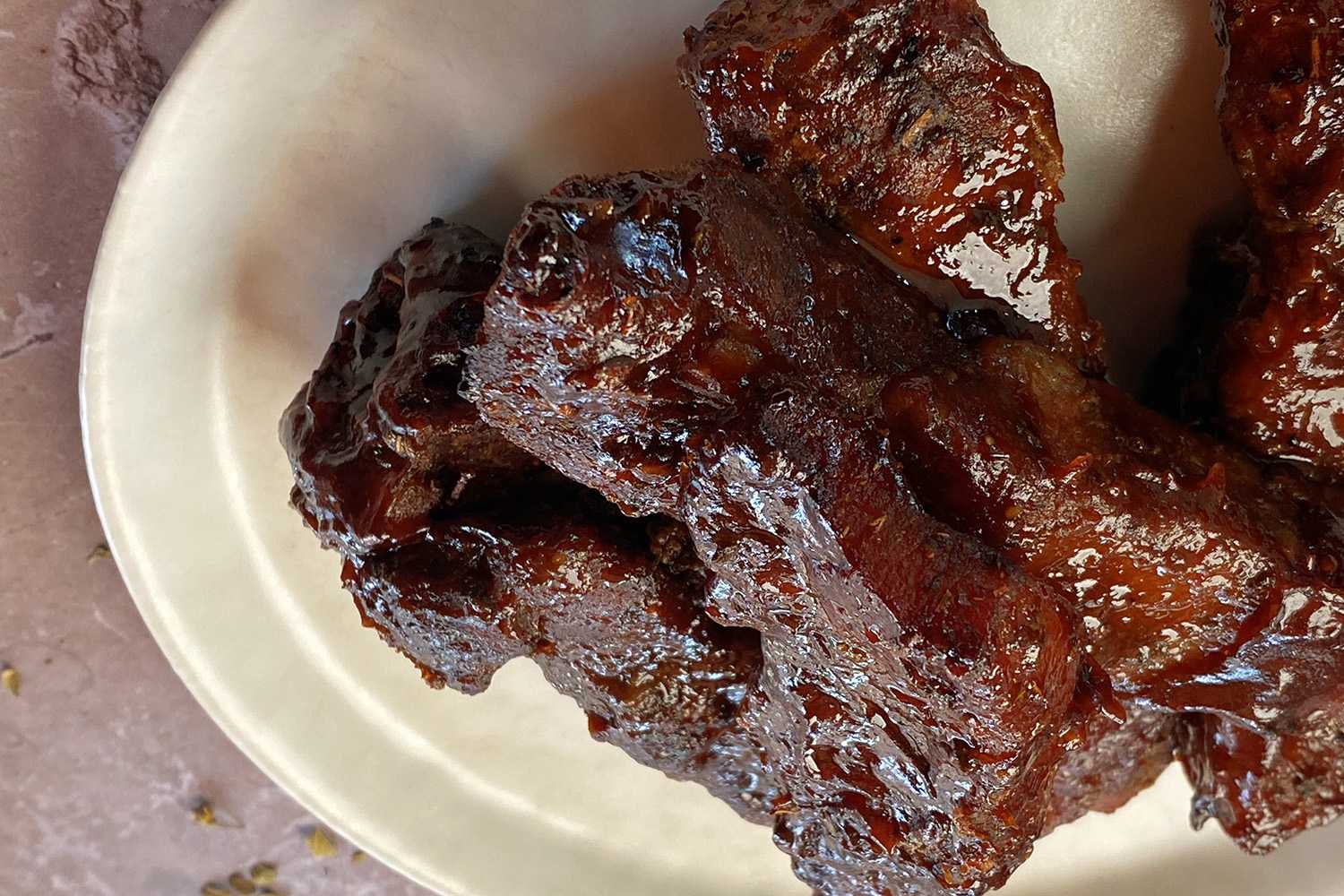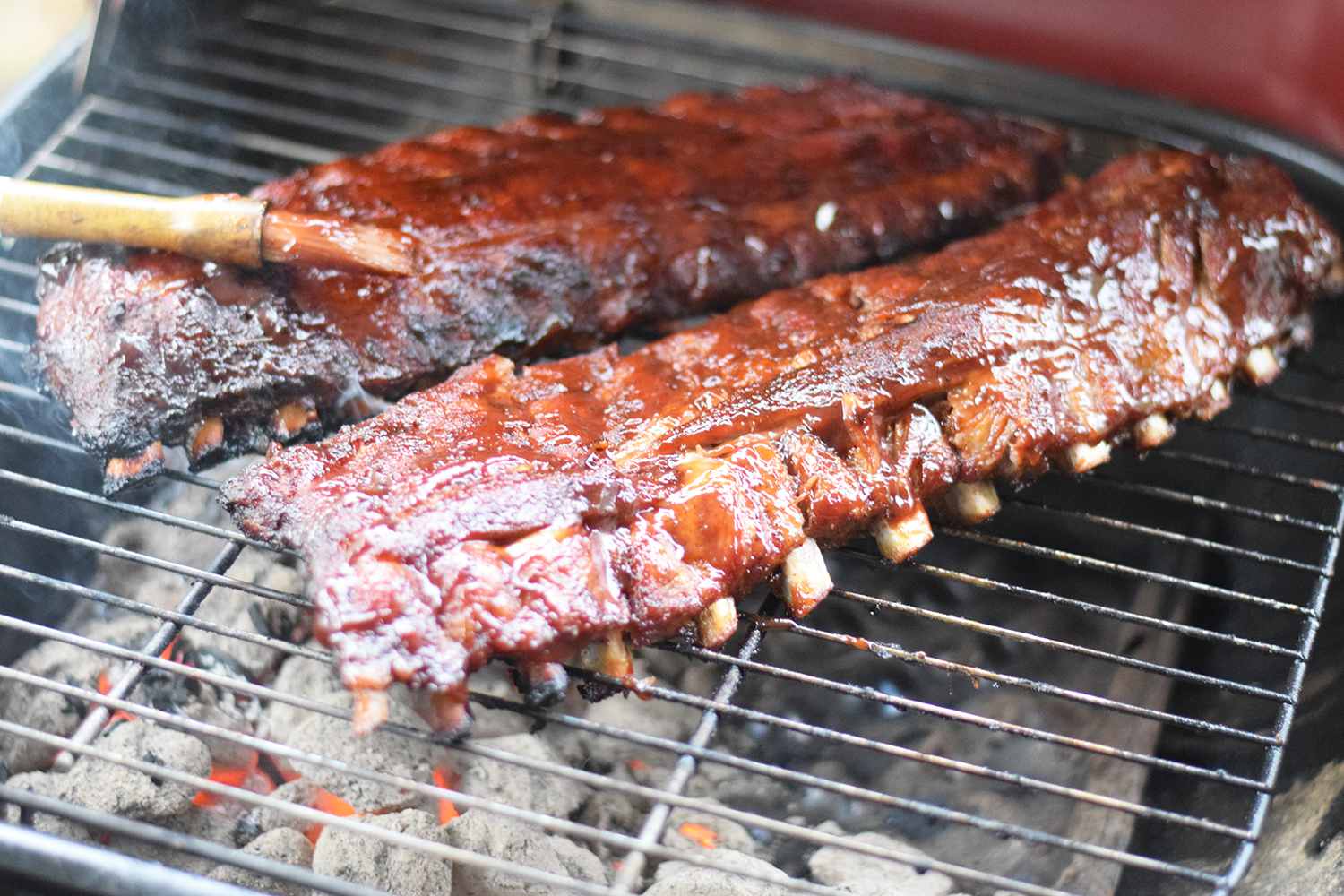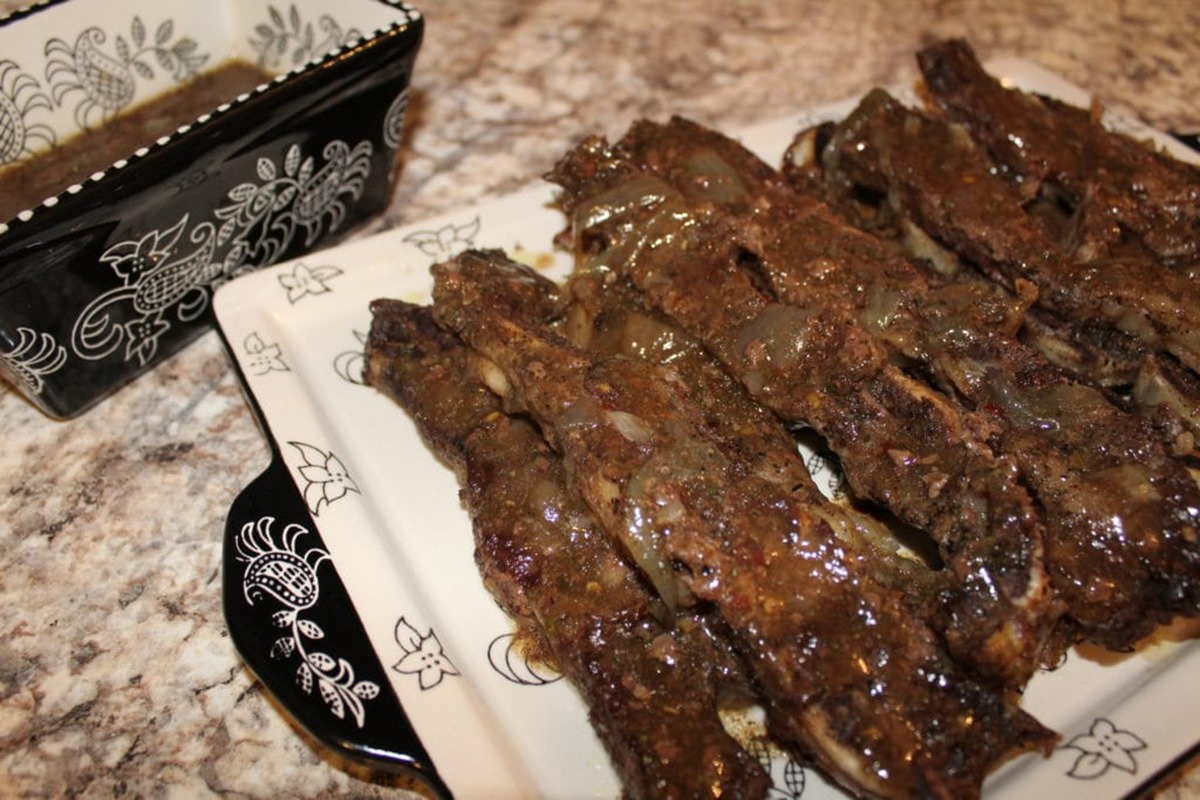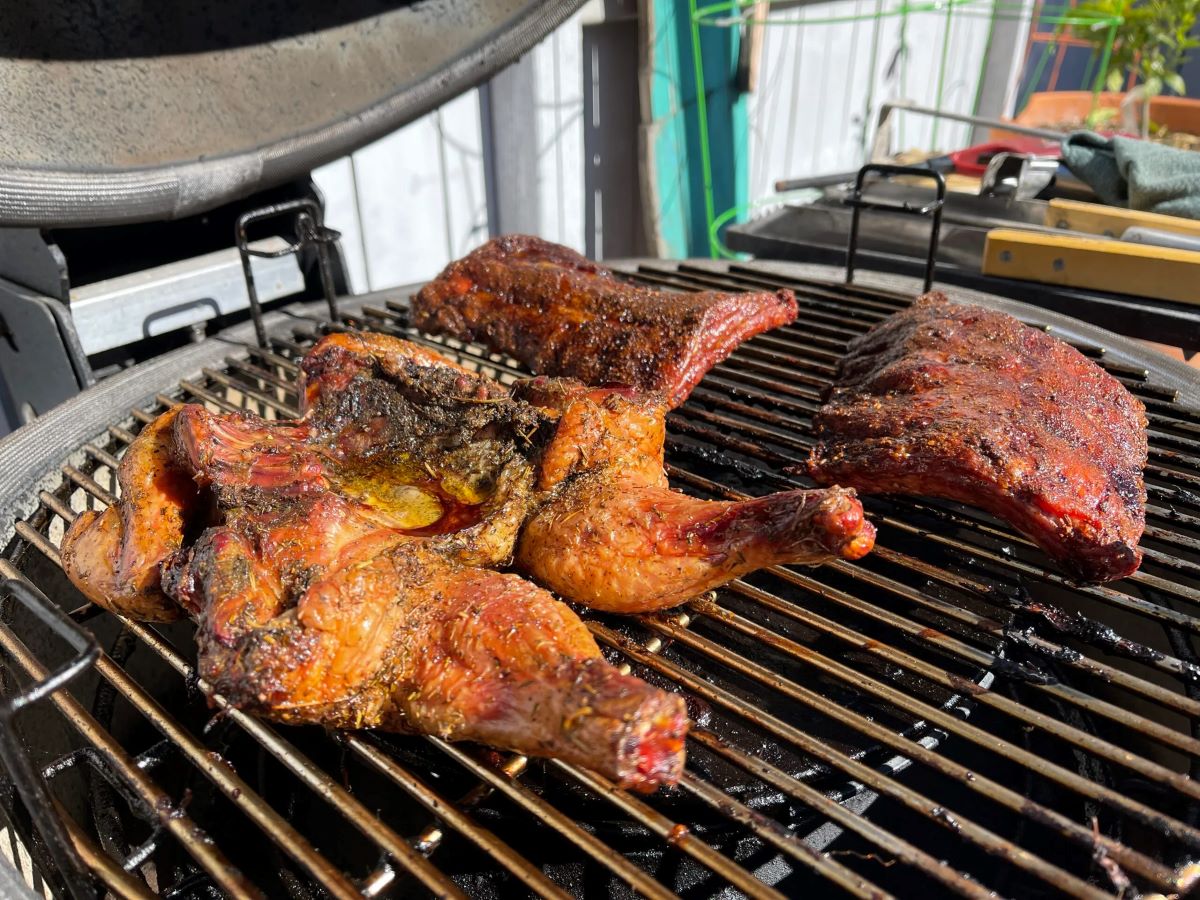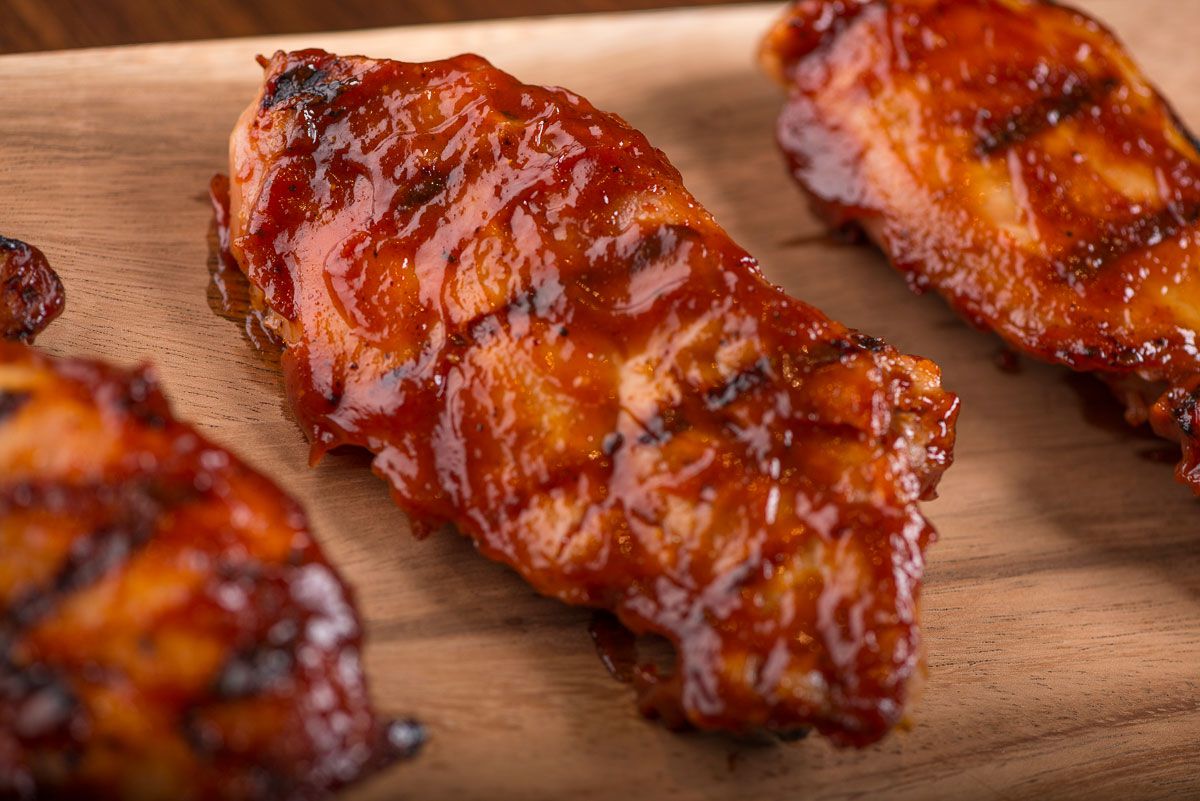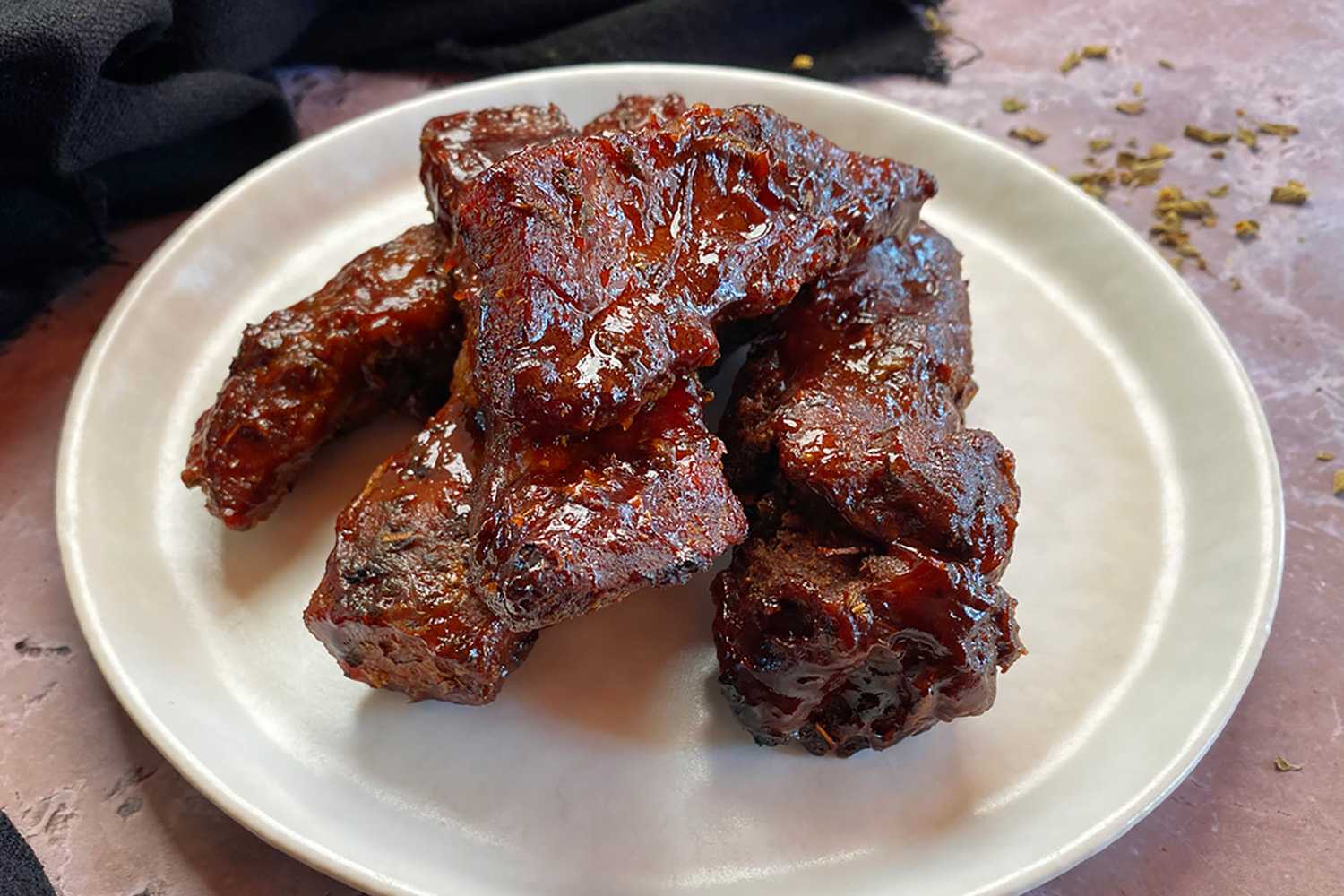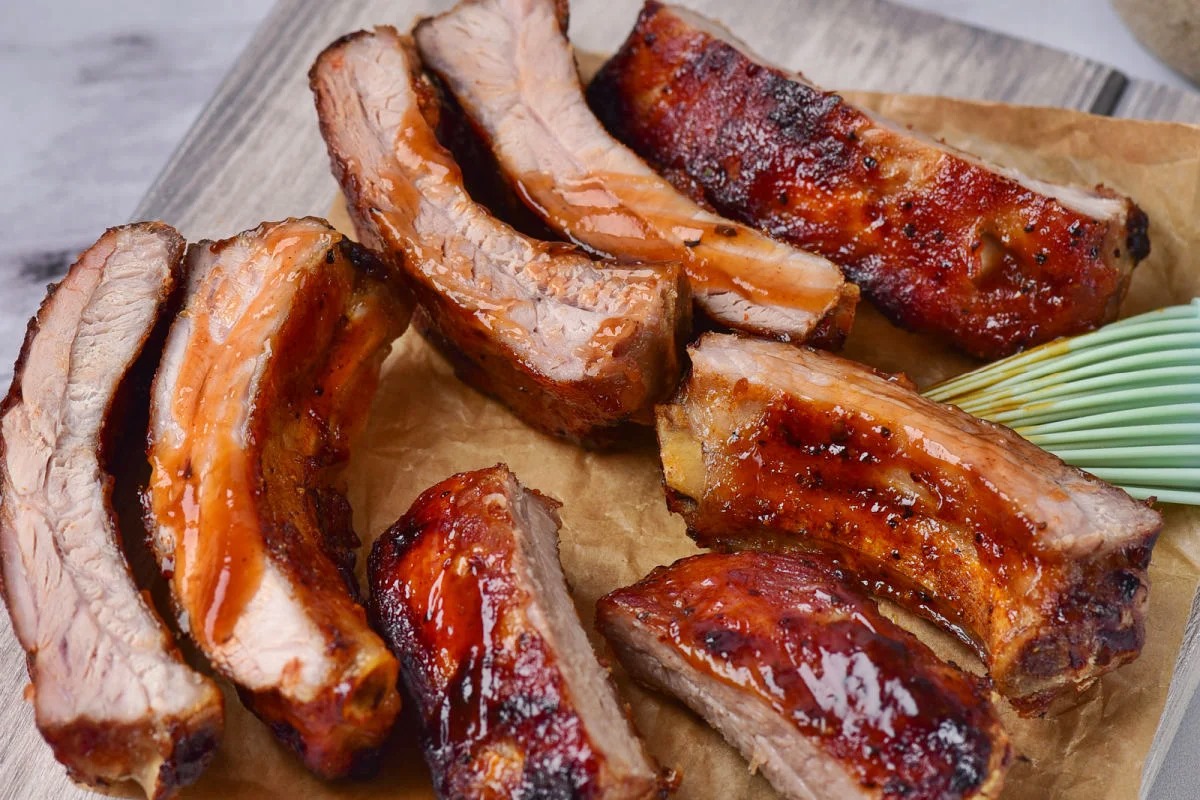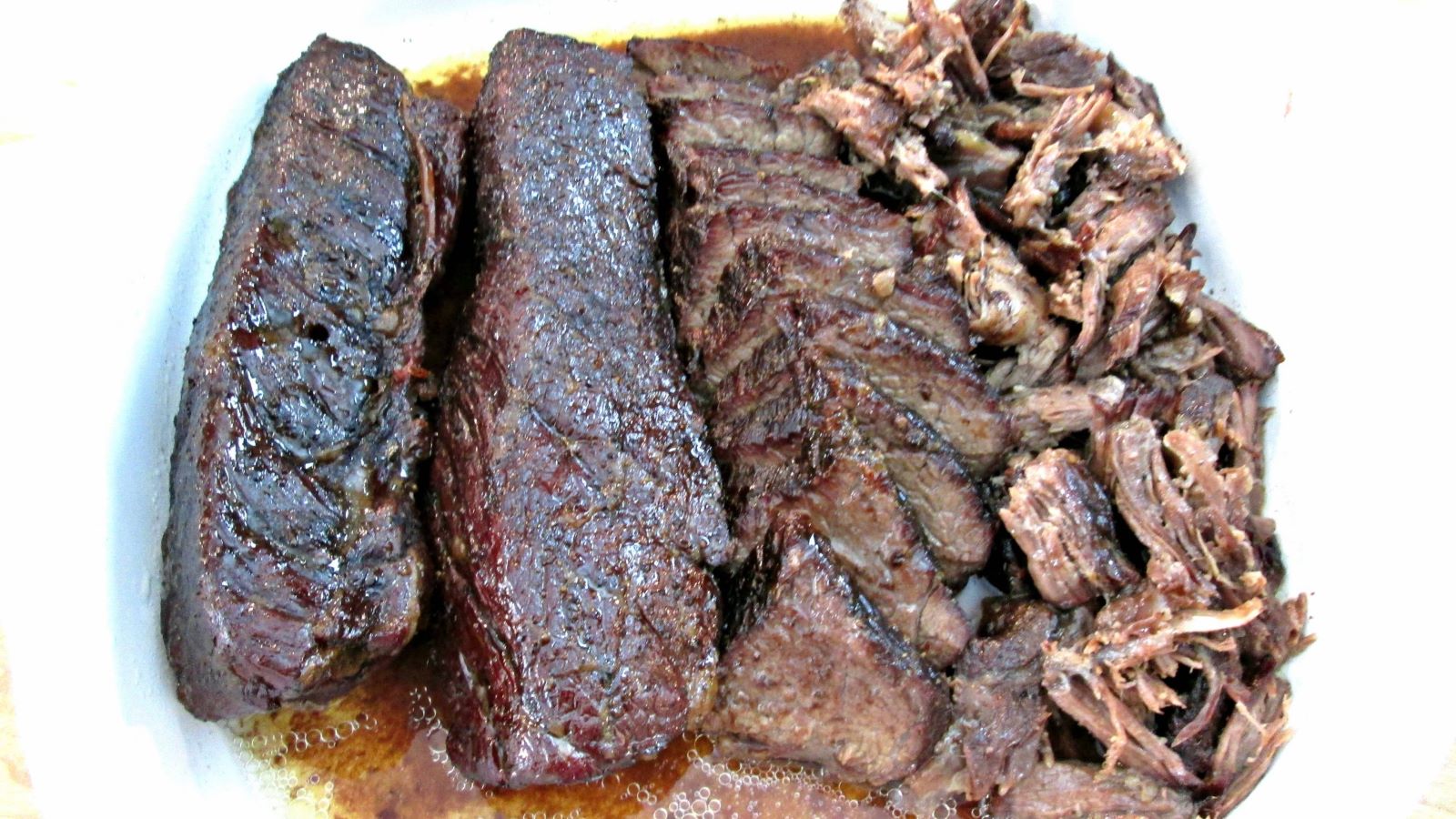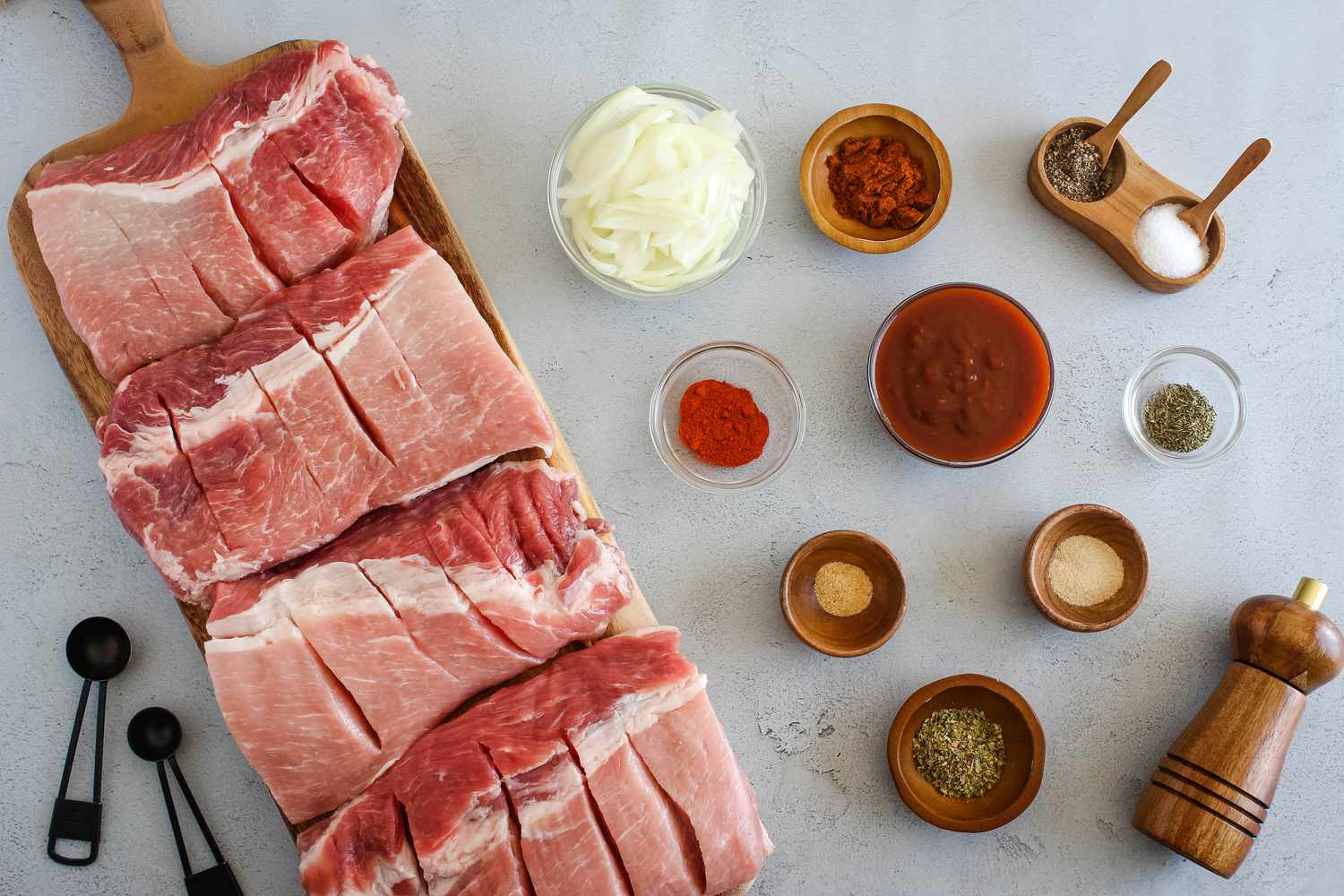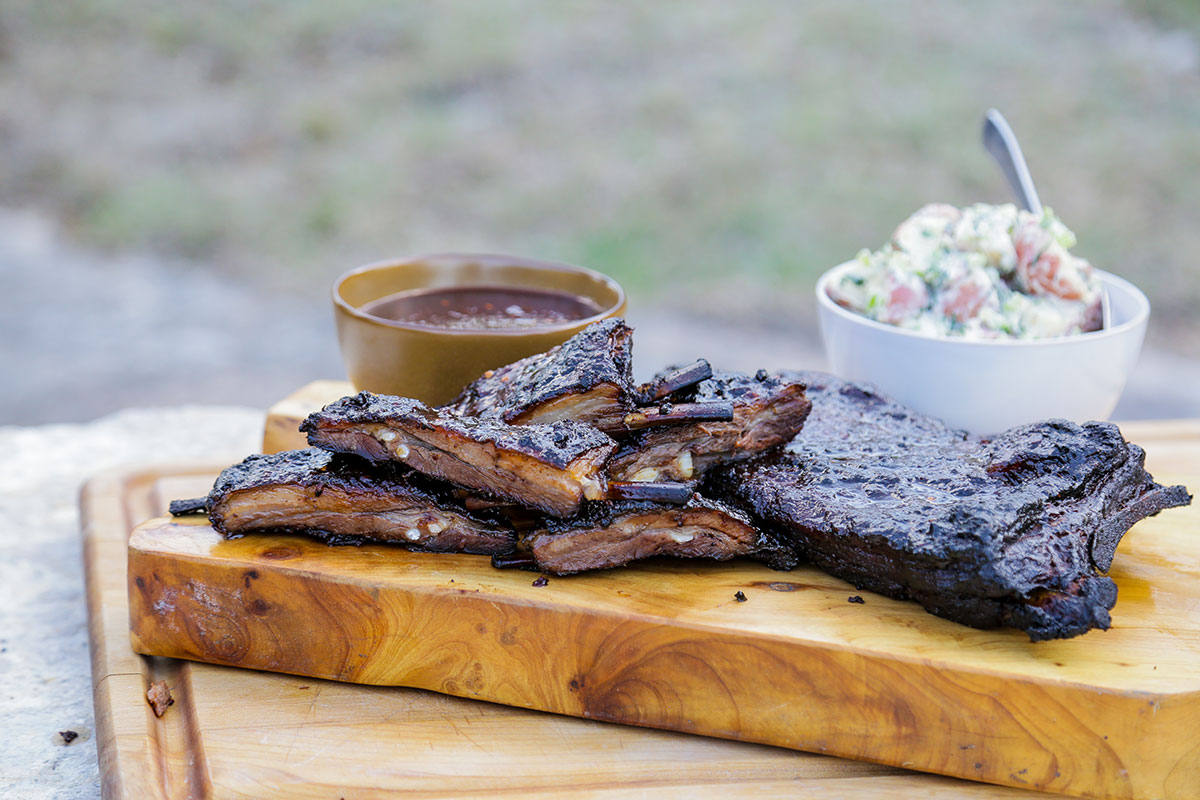Barbecue ribs are a favorite for many, but choosing the right cut can make all the difference. Whether you prefer baby back ribs, spare ribs, or St. Louis-style ribs, each offers unique flavors and textures. Baby back ribs are leaner and cook faster, while spare ribs are meatier with more fat, providing a richer taste. St. Louis-style ribs, a trimmed version of spare ribs, offer a balance of meat and fat. Understanding these differences helps you select the best cut for your next BBQ, ensuring tender, flavorful ribs every time. Let's explore these cuts to perfect your grilling game.
Essential Ingredients for Perfect BBQ Ribs
Ingredients for the Perfect BBQ Ribs
- 2 racks of baby back ribs or spare ribs
- 1/4 cup brown sugar
- 1/4 cup paprika
- 1 tablespoon black pepper
- 1 tablespoon salt
- 1 tablespoon chili powder
- 1 tablespoon garlic powder
- 1 tablespoon onion powder
- 1 teaspoon cayenne pepper
- 1/2 cup apple juice
- 1/2 cup apple cider vinegar
- 1 cup BBQ sauce (your favorite brand or homemade)
Must-Have Tools for BBQ Ribs
- Meat Thermometer
- Sharp Knife
- Cutting Board
- Rib Rack
- Grill or Smoker
- Aluminum Foil
- Basting Brush
- Tongs
- Charcoal or Wood Chips (depending on your cooking method)
- Chimney Starter (for charcoal grills)
- Grill Gloves
Baby back ribs are tender and lean, while spare ribs are meatier with more fat. Choose baby back for quick cooking or spare ribs for richer flavor and longer grilling.
Why Choose the Perfect BBQ Ribs
Baby back ribs come from the upper part of the ribcage, near the spine. They are shorter, leaner, and cook faster. Spare ribs are cut from the belly, making them larger and meatier. They have more fat, which adds flavor but requires longer cooking times for tenderness.
Step-by-Step Guide to BBQ Ribs
Comparing Cuts for the Perfect BBQ Ribs
1. Choose Your Cut:
- Baby Back Ribs: Smaller, leaner, and more tender. Ideal for quick cooking.
- Spare Ribs: Larger, meatier, and have more fat. Great for slow cooking.
- St. Louis Style Ribs: Trimmed spare ribs with a uniform shape. Easier to cook evenly.
2. Prepare the Ribs:
- Remove the Membrane: Use a knife to lift the edge of the membrane on the bone side. Grip with a paper towel and pull off.
- Trim Excess Fat: Cut away any large chunks of fat to prevent flare-ups and ensure even cooking.
3. Season the Ribs:
- Dry Rub: Mix spices like paprika, brown sugar, garlic powder, onion powder, salt, and pepper. Rub generously on both sides.
- Marinate: For extra flavor, marinate ribs in a mixture of apple cider vinegar, soy sauce, and honey for a few hours or overnight.
4. Preheat Your Grill or Smoker:
- Gas Grill: Preheat to 225°F. Set up for indirect cooking by turning off burners on one side.
- Charcoal Grill: Light charcoal and arrange on one side for indirect heat. Maintain temperature at 225°F.
- Smoker: Preheat to 225°F. Use wood chips like hickory, apple, or cherry for added flavor.
5. Cook the Ribs:
- Place Ribs on Grill/Smoker: Position ribs bone-side down on the cooler side of the grill or in the smoker.
- Maintain Temperature: Keep the grill or smoker at a steady 225°F. Adjust vents and add charcoal or wood chips as needed.
6. Monitor and Mop:
- Check Every Hour: Ensure temperature stays consistent. Add more charcoal or wood chips if necessary.
- Mop Sauce: Mix apple juice, apple cider vinegar, and a bit of your dry rub. Mop ribs every hour to keep them moist.
7. Wrap the Ribs:
- After 3 Hours: Wrap ribs in aluminum foil with a splash of apple juice. This helps tenderize the meat.
- Cook for 2 More Hours: Return wrapped ribs to the grill or smoker.
8. Finish Cooking:
- Unwrap Ribs: After 2 hours, unwrap ribs and place back on the grill or smoker.
- Apply BBQ Sauce: Brush ribs with your favorite BBQ sauce. Cook for another 30 minutes to set the sauce.
9. Check for Doneness:
- Bend Test: Pick up ribs with tongs. If they bend easily and the meat starts to crack, they’re done.
- Internal Temperature: Use a meat thermometer. Ribs should reach 190°F to 203°F for optimal tenderness.
10. Rest and Serve:
- Rest Ribs: Let ribs rest for 10-15 minutes before cutting. This helps juices redistribute.
- Slice and Serve: Cut between the bones and serve with extra BBQ sauce on the side.
Mastering BBQ Ribs
Perfect BBQ ribs come down to choosing the right cut and cooking method. Baby back ribs are leaner and cook faster, making them ideal for those who prefer a tender bite. Spare ribs offer more meat and fat, giving a richer flavor but requiring a bit more time on the grill. St. Louis-style ribs are a trimmed version of spare ribs, providing a uniform shape for even cooking.
Remember to season generously and cook low and slow for the best results. Whether you prefer the lean tenderness of baby back ribs or the hearty flavor of spare ribs, mastering these cuts will elevate your BBQ game. Experiment with different rubs, sauces, and smoking techniques to find your perfect rib recipe. Happy grilling!
Common Questions About BBQ Ribs
What makes baby back ribs different from spare ribs?
Well, baby back ribs come from the top of the rib cage, right up against the backbone. They're leaner, tender, and cook faster than their counterparts. Spare ribs, on the other hand, hail from the belly side of the rib cage. They're meatier, fattier, and pack a punch of flavor, but they'll need a bit more time on the grill to get them just right.
How long should I cook ribs on the grill?
Patience is key when grilling ribs. For baby back ribs, you're looking at about 1.5 to 2 hours over low, indirect heat. Spare ribs take a bit longer, usually 2.5 to 3 hours. Remember, low and slow wins the race, ensuring your ribs come off the grill juicy and fall-off-the-bone tender.
Can I marinate ribs overnight?
Absolutely, and you should! Marinating your ribs overnight not only infuses them with mouthwatering flavors but also helps tenderize the meat. Whether you're team baby back or spare ribs, a good soak in your favorite marinade will set you up for BBQ success.
What's the best way to achieve smoky flavor if I'm using a gas grill?
No worries if you're not working with charcoal. You can still get that coveted smoky flavor on a gas grill. Just wrap some wood chips in foil, poke a few holes in the package, and place it over one of the burners. As the wood chips smolder, they'll envelop your ribs in a delicious smoky hug.
Should I remove the membrane from the ribs before cooking?
You bet. Removing the membrane, or silverskin, from the back of the ribs helps the seasonings penetrate deeper and allows the ribs to cook more evenly. Just get a grip on the corner with a paper towel and pull it off in one go. It's a simple step that makes a big difference.
Is it better to baste ribs with sauce while they cook or after?
Both methods have their fans, but if you're after that sticky, caramelized exterior, start basting with your BBQ sauce during the last 30 minutes of cooking. Applying sauce too early can lead to burning, due to the sugars in the sauce. A little patience here means you'll get that perfect, saucy finish.
What's the ideal internal temperature for cooked ribs?
For ribs that are both safe and succulent, aim for an internal temperature of 145°F (63°C). But remember, with ribs, it's not just about hitting the right temperature; it's also about how easily the meat pulls away from the bone. That's your true sign they're done to perfection.
